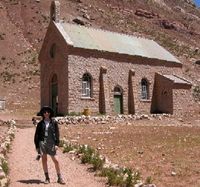One of the things I was doing while not blogging of late, in addition to taking vacations and re-starting the book, was the continued pursued of locavorism. Many aspects of this way of life have now become habit - the farmer's market, bread-baking, using honey instead of sugar. The juice and the milk that we buy has the added benefit of coming in returnable glass bottles (the old deposit system), which adds the satisfaction of reducing our waste. I know, glass is recyclable, but the world can only absorb so much recycled glass.
One thing that didn't go so smoothly was my quest for canning tomatoes. Because we had The Summer That Wasn't here in the Northwest, the tomato crop was rather sad, and in particular, there was a near-complete absence of canning varieties. That would be the meaty ones, the Romas and San Marzanos and such.
I had in my head that I would attempt to put up some of the foods that would not otherwise be available in winter, rather than import them from California or Mexico. I canned 12 pints of cherries and four quarts of peaches. I roasted and froze five pounds of peppers, blanched and froze a couple pound of green beans. I purchased, and have stored in neat glass storage jars, two quarts each of dry kidney, red, black and garbanzo beans.
But the tomatoes proved elusive. Week after week I would ask around at the farmer's market, even visiting other markets. People had a few canners here and there, but not enough to make it worth the effort. Twice I received an absolute promise that they'd be there the next week, at another market...only to be disappointed.
Finally I saw a box of decent-sized Romas at one stand in the U District. I bought their whole stock - 20 pounds, at a 10 percent discount. I brought them home and cleaned them, skinned them (after a quick dip in boiling water), and then hot-packed and canned them in quart jars.
How many quarts do you get from 20 pounds of raw tomatoes? Ten. I might have canned more the next weekend if I could've found them, but alas. Nothing but slicers and cherries to be had. And yellow tomatoes, which aren't acidic enough to can safely.
One interesting thing about the locavore experiment is thinking about what really is better for the environment. So: growing summer produce year-round using greenhouses and irrigation, and then trucking it all over the country, uses an unsustainable amount of energy and water. Fine. What was required to produce my ten quarts of canned tomatoes?
I bought them from a local organic farmer. Good. They cost me $55 - that's $5.50 per quart, just to start. Then there's the cost of the jars, which I'm not really counting because they're reusable, though the flat part of the two-piece lid can't be re-used for canning purposes. So add a few cents for that. Then there was the lemon juice needed to ensure a safe level of acidity (tomatoes being right on the PH bubble, in terms of being inhospitable to botulism). And then lots of boiling water: the initial boil to loosen the skin, the boiling water to fill up the jars, and enough to fill a 20-quart canning kettle. Lastly, there's the electricity to run the stove, bringing the kettle to boil and keeping it there through two 45-minute rounds of canning. Theoretically you could throw in the value of my time, about four hours total for the canning process, but we'll ignore that since I don't have a billable rate for canning.
Conservatively, we're talking $6 to $7 per quart of tomatoes.
That's not totally outrageous, but it's not cheap either. It probably still produced fewer carbon emissions than the fresh tomatoes shipped up from Mexico in the middle of winter. (Though to some extent that turns on the electricity that powers my stove, which happens to come from greener wind and hydro sources in this neck of the woods...still more complexity.) So, I'm doing better eating these than eating fresh this winter. But how do my canners compare to other canned tomatoes I might buy, industrially canned and shipped in bulk from ... somewhere?
Well, I don't know where exactly the store-bought canned tomatoes come from. If it were Oregon or California, that might still be a better deal than home-canning, carbon-wise, but maybe not Florida.
I have ten empty quart jars left, and would consider doing some more canning before the season ends but I'm not sure I have the time. I'm out of town the next two weekends. And I'm only really committed to it for things that I legitimately can't get fresh and local in winter. The best fruit for canning right now is pears, and we'll be able to get Washington-grown pears that are cold-stored all winter.
If anybody out there has 20 more pounds of San Marzano tomatoes, though, let me know.
